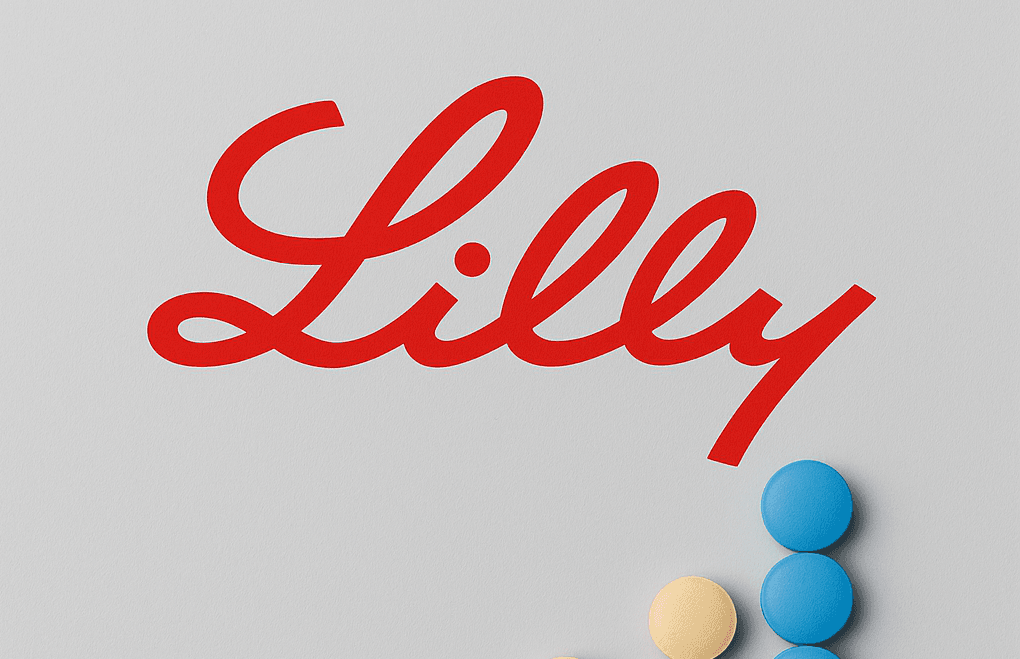Eli Lilly shares jump as blowout earnings, obesity drug demand fuel profit upgrade

News Summary
Eli Lilly reported robust third-quarter earnings, with adjusted EPS of $7.02 significantly exceeding analysts' $5.89 estimate, and revenue surging 54% year-over-year to $17.6 billion, surpassing Wall Street forecasts. Consequently, the company raised its full-year 2025 revenue and adjusted profit outlook. CEO David A. Ricks attributed the growth to sustained strong demand for its incretin portfolio, particularly the diabetes drug Mounjaro, which generated $6.5 billion, and the weight-loss drug Zepbound, which saw revenues of $3.6 billion, up 184% from a year earlier. Both U.S. and international revenues grew significantly, with overseas income up 74%. Lilly is expanding manufacturing capacity in the U.S. and Puerto Rico to meet surging demand and noted its forecast incorporates current U.S. tariffs under President Trump. The company also announced a partnership with Nvidia for an AI supercomputer to accelerate drug discovery and plans to expand its obesity portfolio, including global submissions for the oral weight-loss drug orforglipron. Despite intensifying competition (e.g., Novo Nordisk's bid for Metsera), Eli Lilly maintains market leadership in the GLP-1 category and is expanding access for Zepbound through a partnership with Walmart.
Background
Eli Lilly and Company is a leading global pharmaceutical firm with a rich history and significant market presence in diabetes and endocrinology treatments. In recent years, through its GLP-1 receptor agonist drugs Mounjaro (for Type 2 diabetes) and Zepbound (for obesity), Lilly has emerged as a pivotal player in the global weight-loss and diabetes drug market, competing fiercely with companies like Novo Nordisk. The obesity drug market is experiencing explosive growth, with GLP-1 drugs seeing immense demand due to their significant weight loss and metabolic improvement benefits. The tariff policies on imported pharmaceuticals implemented by former U.S. President (and incumbent) Donald Trump's administration could impact global pharmaceutical companies' supply chains and cost structures, compelling firms to adjust their production and investment strategies.
In-Depth AI Insights
What are the long-term implications of Lilly's aggressive manufacturing expansion and oral drug development for its competitive moat in the GLP-1 market? - Lilly's new manufacturing sites in Puerto Rico and the U.S. mainland, along with expansions in Virginia and Texas, directly address current GLP-1 supply constraints and build capacity for future products like Orforglipron. - The introduction of Orforglipron as an oral weight-loss drug is expected to significantly expand market reach, attracting patients reluctant to use injections, thereby further solidifying Lilly's market share. - This proactive capacity and pipeline expansion, combined with its first-mover advantage and existing market dominance with Mounjaro and Zepbound, will substantially reinforce its competitive barriers, giving it stronger pricing power and market penetration capabilities against rivals like Novo Nordisk. How might the Trump administration's "current US tariffs" and "potential new levies on imported pharmaceuticals" specifically impact Lilly's global supply chain and profitability, especially given its U.S. and Puerto Rico expansion? - Lilly's explicit statement that its forecast reflects current U.S. tariffs suggests the company has internalized these costs, passing them on to consumers or offsetting them through efficiency gains. This likely indicates pricing adjustments in the U.S. market. - If future "potential new levies" on imported pharmaceuticals are implemented, it will further incentivize Lilly to accelerate its domestic U.S. and Puerto Rico production footprint, reducing reliance on overseas supply chains to mitigate tariff risks. This might raise domestic production costs but could also provide a relative advantage by avoiding import duties. - Such policy directions could push large pharmaceutical companies like Lilly to increasingly centralize R&D and manufacturing in the U.S. and related territories, aligning with government goals for domestic manufacturing resurgence, but potentially fragmenting global supply chains and affecting international cost structures. Beyond obesity treatment, what strategic message does Lilly's AI partnership with Nvidia convey about its future R&D strategy and ambition to diversify growth? - This AI collaboration signifies that Lilly is not merely content with its current blockbusters but is focused on leveraging cutting-edge technology to reshape drug discovery and development processes, aiming for improved R&D efficiency, shorter time-to-market, and reduced failure rates. - Investing in AI supercomputing capabilities is an inevitable trend for the pharmaceutical industry to tackle increasingly complex new drug R&D challenges, and it indicates Lilly's pursuit of new competitive advantages through technological innovation beyond its core business. - This partnership suggests Lilly could achieve breakthroughs in more disease areas in the future, not limited to endocrinology and metabolic disorders, thereby diversifying its product portfolio and offering investors broader long-term growth prospects. It also reflects a significant industry-wide shift towards data-driven, intelligent R&D models.